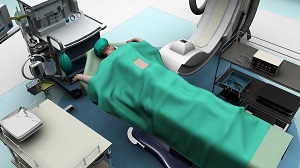
Revision spine surgery is surgery performed in certain patients to correct the problems of earlier spine surgery.
Indications
Revision surgery is indicated in patients with chronic pain even after surgery. Other factors indicated for revision spine surgery include:
- Scar tissue formation around the incision
- Unsuccessful surgery
- Surgery at the wrong site
- Surgery in non-eligible candidates
- Improper diagnosis
- Post-surgical complications
Failed back syndrome or failed back surgery is a condition used to describe persistent back pain following back surgeries.
Procedure
The goal of revision spine surgery is to reduce pain and resume normal activities. The revision spine surgery is performed in certain conditions such as re-herniation of a disc, infection, pseudoarthrosis, hardware failure, non-surgery related spine degeneration, flat back syndrome, instability, or adjacent segment degeneration.
Revision spine surgery can be performed using minimally invasive techniques where surgery is done by making small incisions. This method causes less damage to muscles and conjunctive tissue surrounding the spine. Laser scalpel will be used to repair the damaged tissues which involve cutting away broken, malformed, or damaged tissue.
Procedures intended to repair previous interventions include laminotomy, foraminotomy, facet thermal ablation, spinal fusion, and microdiscectomy. Rehabilitation after revision surgery includes exercises to harden the weakened muscles in the affected areas.
Anterior and posterior approach: This approach is used in certain types of deformities. The first approach to the spinal column is made from the front. The incision is made on the patient’s side, over the chest wall, or lower down along the abdomen. Disc material between the vertebrae is removed. This procedure requires the removal of a rib, which is later used for bone grafting.
After the anterior procedure, the wound is closed and the patient is positioned for the posterior approach. The incision is made down the middle of the back. Hooks are attached to the back of the spine on the lamina, and screws are placed in the middle of the spine. After the placement of hooks and screws, a rod is bent and contoured into a more normal alignment for the spine and the correction is performed. After the final tightening, the incision is closed and dressed.




